R.I.P. Saturday Morning Cartoons
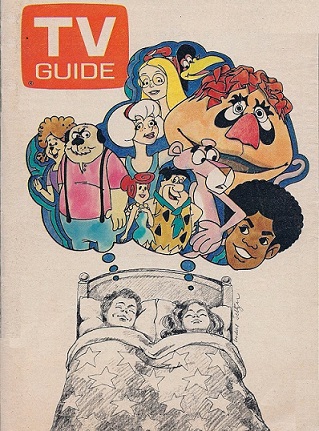
This early 70's TV Guide expertly captures what every child of that era was dreaming of.
On Saturday, September 27, 2014, an American institution came to an end. For most people, if it was noticed it all, it was only as a brief thought in passing and quickly forgotten. Granted, the end was long and slow in coming but it still deserved better. Saturday, October 4, marked the first time in over five decades that there were no cartoons on American network television. The Saturday morning staples that multiple generations grew up loving were gone.
Saturday morning cartoons, an erroneous grouping that included live action programming as well, were an institution in the United States since the 1950’s, almost as long as broadcast television had been available. They flourished in the 1960’s and 70’s to the point that the lineups were treated almost as reverently as prime time programming by the networks. Advertisements were run in comic books months in advance touting the new season and prime time specials were often broadcast a few days before the premiere of that year’s programing. Over the years, many iconic characters were created by Saturday morning cartoons and others were revitalized and reimagined. This amalgam of animation featured a combination of first run programs mixed with prime time cast offs, theatrical compilations, and reworked spin offs that hardly seem believable in retrospect (anyone remember The Partridge Family 2200 A.D.?).
As a child who spent most of his formative years in the 1970’s, I grew up at a time when Saturday morning cartoons were truly in their Golden Age. The traditional network programming lineup ran from roughly 8AM to 12PM each Saturday. The early and later hour were usually reserved for repeats of shows that had been around for several years already or that were considered weaker draws. From 9AM to 11AM, the networks trotted out the best they had to offer and it was often a channel switching nightmare on the old rotary TV dial to see as much of two programs as one reasonably could at the same time. VCRs were still science fiction in these days!
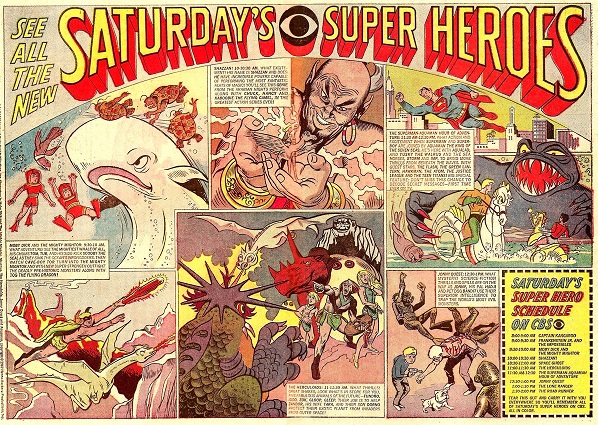
During the mid 60's, CBS opted for an all superhero lineup that introduced many icons to Saturday mornings.
During my heyday as a child, Saturday morning television viewing began as early as I could get myself out of bed, stagger into my family’s living room and plop down in front of our one and only enormous 26 inch console TV set. For a child who had to normally be prodded out of bed with all manner of incentive or threat during the week, I usually sprang to life with a new found energy during the late pre-dawn hours of a typical Saturday. If I was up too early, I was forced to make do with the tail end of Tarzan Theater or Nite-Owl Theater until the real kid’s stuff started around 7AM. This pre-network hour was usually filled with local programing or shows that were already many years past their prime, but Bullwinkle and Thunderbirds were still new to me! During the first true hour from 8AM-9AM, when there was the possibility of me having already seen what was on offer even at a young age, I usually wandered into the kitchen, still within ear shot of the television set, to fix myself that staple of childhood sustenance, a bowl of cereal. Armed with my vat of Cap’n Crunch or Frankenberry topped with a sliced banana, just to give it some form of nutritional value, I could settle in with repeats while waiting for the real gems.
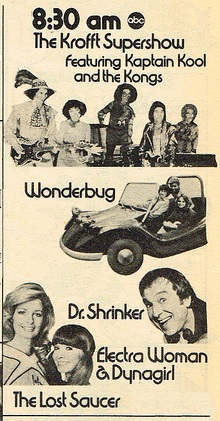
Brothers Sid and Marty Krofft contributed a major portion of the live action shows for Saturday mornings from the late 60's until the mid 80's.
By 9AM, my mother was up and cooking breakfast while I was making mental notes on what I wanted from the toy commercials that were almost as entertaining to me as the programs they sponsored. Sadly, the intrusion of parents also coincided with the appearance of first run programming on multiple networks, so the need to rapidly switch channels back in forth was met with threats of punishment, usually the banishment of my television viewing privileges, if I didn’t stop “trying to break the knob off the TV”! Adults never understood how important this viewing was to later weekend and even weekday socialization skills when children had to compare and contrast their viewing choices with their peers. This was always the first item on the agenda later that day and, depending on just exactly how epic that particular Saturday’s viewing had been, it could easily carry over into the Monday morning weekend update at school the next week. Thankfully, Saturday morning cartoons over the summer were largely repeats, just like prime time programming, so the backlog of information to share with your school mates the following August was mercifully minimized!
My adrenalin was usually at peek performance by the 10AM-11AM hour and I had a full and. more or less healthy by 1970’s standards, breakfast under my belt. I was fortunate that our dining room table was within eyeball range of the television as Saturday mornings were the one time in my childhood my parents allowed the TV to stay on while we ate. As the morning moved on, there was always the possibility that some socially inept neighbor kid would make the grievous mistake of knocking at your door before noon (even the noon to 1PM hour was a dangerous time to come calling but acceptable in emergency situations). In such cases at my house, they were quickly dismissed by me after my parents forced me to go to the door in the first place. Most promised to return at a more reasonable time once their transgression had been pointed out and I always figured they raced home at that point once they realized the cartoons were still on.
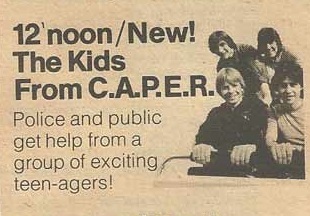
Aimed at older children, C.A.P.E.R. lasted only one season in the late 70's and then vanished into obscurity.
The final hour of network programing was a mixture of repeated older shows, more educational programming that most children avoided like the plague, or entertainment aimed at older kids who were probably more interested in the cartoons anyway. By the time this was over, outside endeavors were looking more attractive but a few stations still held out with some oddball animated fare or, better yet, syndicated airings of some great series like Voyage to the Bottom of the Sea or The Time Tunnel to keep us out of the sunlight just a little while longer. It was truly a great time to be alive.
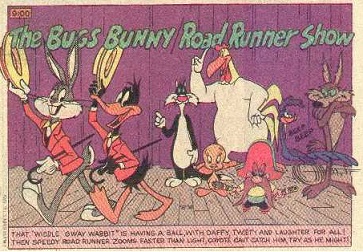
The Bugs Bunny / Road Runner Show was a Saturday morning cornerstone that lasted for decades.
As I grew older and entered high school and then college, my Saturday morning viewing habits became far less structured and more irregular but they never ended completely. I still especially enjoyed the reruns of The Bugs Bunny / Road Runner Show that had existed throughout my entire childhood in one form or another, even after they were censored unmercifully in the 80’s to tone down there violent content. There was even the odd new program or two that turned up each season and caught my attention for a full half hour. Of course I was staying out later on Friday nights by this time and intentionally rising early on a Saturday was almost unthinkable but I still managed not to completely lose touch with my beloved Saturday morning cartoons.
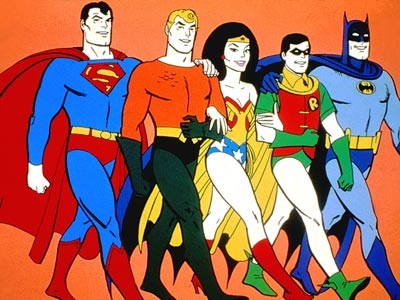
Hanna Barbera had a hit on their hands when they teamed some of DC Comics top characters into the Superfriends.
The death of Saturday morning cartoons was a long, slow, and very painful process. In 1992, something that we only dreamed about as kids became a reality – the 24 hours a day, seven days a week Cartoon Network debuted. Now, what was once limited to a few hours one morning a week was available any time you wanted it. Of course, this wasn’t the same quality or all of the programs we remembered but still it was astounding that such a network could finally become a reality at all. Coincidently, 1992 was also the year that the first television network, NBC, jettisoned their Saturday morning cartoon line up in favor of news shows and other programming more reminiscent of their weekday fare.
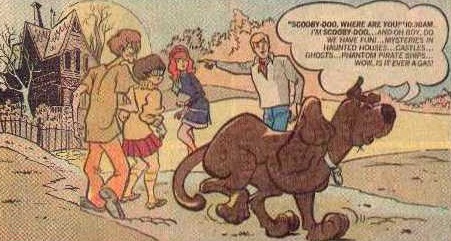
Scooby Doo, who debuedt in 1969, was probably the most endearing animated character ever created for Saturday morning cartoons.
ABC and CBS both managed to hang on for more than a decade longer but the quality of their programming declined steadily and only made other alternatives that much more attractive. Both networks called it quits in the fall of 2004 and by this time the personal computers in almost every household in America were making cartoons available by streaming on demand as well. The Fox network, which had originally offered some very promising Saturday morning shows like X-Men and The Tick, had already given up two years prior, so this left only the CW Network, which was fueled by the animation power house of Warner Brothers, to carry the ebbing torch. To their credit, CW managed to keep the tradition alive on their own for another decade before the era finally came to an end.
In many ways, the death of Saturday morning cartoons was a merciful one that ended many years of suffering. In the 90’s, the FCC passed a ruling that television networks had to provide a minimum of three hours of educational programming per week. This may not seem like much time but since the networks were not about to tamper with their prime time cash flow and Saturday morning shows were already floundering by this point, the solution was an easy one. With the Cartoon Network and Internet streaming providing an endless flow of cartoons around the clock, Saturday mornings had lost their magic and now kids relived of the rigors of weekday school were more interested in video games than what the broadcast networks had to offer them.
It’s sad to think that today’s youth will grow up without knowing the excitement and anticipation that was the Golden Age of Saturday morning cartoons. It is the price they pay to live in a world of instant gratification and one that will undoubtedly cost them more than they will hopefully ever have the misfortune to realize. To everyone reading this article, I ask that you take a moment and bow your heads in reverent silence. Contemplate briefly those fallen friends like Bugs, Daffy, Yogi, Scooby Doo, and Hong Kong Phooey. They may wander cyberspace and satellite broadcasts until the end of time but only as shadows of their former selves from those bright shining Saturday mornings of a forgotten era.
